

Zitierweise / cite as:
Payer, Alois <1944 - >: Chronik Thailands = กาลานุกรมสยามประเทศไทย. -- Chronik 1989 / B. E. 2532. -- 2. Januar bis Juni. -- Fassung vom 2017-03-19. -- URL: http://www.payer.de/thailandchronik/chronik1989b.htm
Erstmals publiziert: 2012-10-12
Überarbeitungen: 2017-03-19 [Ergänzungen] ; 2016-05-24 [Ergänzungen] ; 2016-05-15 [Ergänzungen] ; 2016-04-12 [Ergänzungen] ; 2014-10-24 [Ergänzungen] ; 2014-09-24 [Ergänzungen] ; 2014-08-27 [Ergänzungen] ; 2014-04-02 [Ergänzungen] ; 2014-04-02 [Ergänzungen] ; 2013-11-18 [Ergänzungen] ; 2013-06-12 [Ergänzungen] ; 2013-05-24 [Ergänzungen] ; 2013-04-26 [Teilung des Jahrgangs] ; 2013-04-15 [Ergänzungen] ; 2013-04-11 [Ergänzungen] ; 2013-04-06 [Ergänzungen] ; 2013-03-30 [Ergänzungen] ; 2013-03-09 [Ergänzungen] ; 2013-01-25 [Ergänzungen] ; 2013-01-13 [Ergänzungen]
©opyright: Dieser Text steht der Allgemeinheit zur Verfügung. Eine Verwertung in Publikationen, die über übliche Zitate hinausgeht, bedarf der ausdrücklichen Genehmigung des Herausgebers.
Dieser Text ist Teil der Abteilung
Thailand von
Tüpfli's Global Village Library
ช้างตายทั้งตัวเอาใบบัวปิดไม่มิด
|
Gewidmet meiner lieben Frau Margarete Payer die seit unserem ersten Besuch in Thailand 1974 mit mir die Liebe zu den und die Sorge um die Bewohner Thailands teilt. |
|
Bei thailändischen Statistiken muss man mit allen Fehlerquellen rechnen, die in folgendem Werk beschrieben sind:
Die Statistikdiagramme geben also meistens eher qualitative als korrekte quantitative Beziehungen wieder.
|
1989-01-01
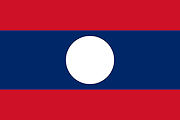
Der neu geöffnete Grenzübergang nach Champasak (ຈຳປາສັກ), Laos in Chong Mek (ช่องเม็ก), Provinz Ubon Ratchathani (อุบลราชธานี), führt dazu, dass thailändische Händler die laotische Seite überfluten und Laoten in Massen zum Markt mit thailändischen Gütern strömen. Wichtige Handelsgüter sind: Kleidung, Plastikwaren, Softdrinks, Früchte, Dosenmilch.
Abb.: Lage von Chong Mek (ช่องเม็ก)
[Bildquelle: OpenStreetMap. -- Creative Commons Lizenz (Namensnennung, share alike)]
1989-01-06
Neues Landbesitzgesetz. Ministerpräsident Chatichai betont, dass auch in Zukunft Ausländer auch nicht einen Zentimeter thailändischen Territoriums kaufen dürfen. Firmen mit ausländischer Beteiligung dürfen allerdings Land erwerben.
1989-01-07

Der Weltkriegskaiser Hirohito (裕仁, geb. 1901), Tenno (天皇) von Japan, ist tot. Neuer Tenno ist Akihito (明仁, 1933 - ).
Abb.: Hochzeitsbild von Akihito (明仁), 1959
[Bildquelle: 宮内庁(投稿者がスキャン)/ Wikipedia. -- Public domain]
Abb.: Japan
[Bildquelle: OpenStreetMap. -- Creative Commons Lizenz (Namensnennung, share alike)]
1989-01-15
Das Ökosystem des Songkhla Lake (ทะเลสาบสงขลา) droht infolge von Verschmutzung umzukippen. Um den See sind 50 Fabriken, die ihren Dreck in den See ablassen. Krabben-Farmen tragen zur Zerstörung des Ökosystems bei. Meerwasser dringt in den See ein. Der Sonkhla Lake ist der größte natürliche See Thailands.
Abb.: Sonkhla Lake (ทะเลสาบสงขลา)
[Bildquelle: OpenStreetMap. -- Creative Commons Lizenz (Namensnennung, share alike)]
"Thale Sap (auch „Songkhla-See“, Thai: ทะเลสาบสงขลา) ist eine fischreiche Lagune in Südthailand nahe der Ostküste des Golf von Thailand in der Provinz Songkhla und der Provinz Phatthalung. Der Songkhla See bildet das größte Binnenmeer Südostasiens. Er ist bis zu 20 Kilometer breit, hat mehrere Inseln und zwei Vogelschutzgebiete. Der Songkhla-See besteht aus vier Teilen. Der südliche, „Thale Sap Songkhla“ genannt, öffnet sich bei der Stadt Songkhla über eine 380 Meter breite Wasserstraße in den Golf von Thailand. Er enthält Brackwasser mit etwa der Hälfte des Salzgehalts des Ozeans. Nach Norden ändert sich die Wasserqualität in Süßwasser. Weiter nördlich erreicht man durch einen 6 Kilometer schmalen Wasserweg den 782,80 Quadratkilometer großen Thale Luang. Nördlich des Thale Luang liegt der 28 Quadratkilometer kleine Thale Noi in einem Mangroven-Sumpf. Bemerkenswert ist die 75 Kilometer lange Nehrung, die den See vom Ozean trennt. Diese Nehrung entstand jedoch durch Schluff, der die ursprünglich hier liegenden Inseln verband.
Ramsar FeuchtgebietDie Feuchtgebiete „Phru Khuan Khi Sian“ am Thale-Noi-See sind durch die Ramsar-Konvention seit 1998 geschützt. Sie sind Teil der 1975 eingerichteten größeren „Thale Noi Non-Hunting Area“[1].
Kuan Ki Sian ist eine der wenigen intakten Süßwasser-Feuchtgebiet-Ökosysteme in Thailand. Es gibt hier Seen, Marsch, Melaleuca, Sumpf, Wald, Reisfelder und sumpfige Graslandschaften.
Eine kleine Population des Irawadidelfins lebt im See, sein Bestand ist aber durch Überfischung und Umweltverschmutzung stark gefährdet."
[Bildquelle: http://de.wikipedia.org/wiki/Thale_Sap. -- Zugriff am 2011-12-12]
1989-01-15

Das legendäre Kino Chalerm Thai Theatre wird abgerissen, um einem königlichen Empfangs-Pavillon und einer Statue für Rama III. Platz zu machen.
1989-01-20 - 1993-01-20

George Herbert Walker Bush (1924 - ) ist Präsident der USA.
Abb.: George Herbert Walker Bush / von Patrick Oliphant (1935 - ), 1989
[Bildquelel: Thiago Santos. -- http://www.flickr.com/photos/thsant/611376163/. -- Zugriff am 2013-05-22. -- Creative Commons Lizenz (Namensnennung, keine kommerzielle Nutzung, share alike)]
1989-01-20
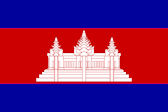
Der kambodschanische Ministerpräsident Hun Sen (ហ៊ុន សែន, 1952 - ) trifft sich in Bangkok mit Ministerpräsident Chatichai. Chatichai betont, dass dieses Treffen keine Anerkennung der von Vietnam abhängigen Regierung Kambodschas bedeute.
Abb.: Hun Sen (ហ៊ុន សែន), 2010
[Bildquelle: World Economic Forum / Ms. Sikarin Thanachaiary. -- http://www.flickr.com/photos/15237218@N00/4673087667. -- Zugriff am 2011-12-12. -- Creative Commons Lizenz (Namensnennung, share alike)]
"Samdech Hun Sen (* 4. April oder 5. August 1952 in Peam Koh Sna) ist ein kambodschanischer Politiker. Er ist ein hoher Funktionär der Kambodschanischen Volkspartei (គណបក្សប្រជាជនកម្ពុជា, französisch Parti populaire cambodgien, abgekürzt PPC) und seit 1985 Ministerpräsident. Der Namensteil Samdech wurde ihm 1993 von König Norodom Sihanouk als Ehrentitel verliehen. Von 1975 bis 1977 diente Hun Sen als Kommandeur eines Rote-Khmer-Regiments in der Verwaltungszone Ost. 1977 floh er vor dem Hintergrund ideologischer Auseinandersetzungen innerhalb der Khmer Rouge (ខ្មែរក្រហម) nach Vietnam. 1978 wurde Hun Sen Gründungsmitglied der United Front for the Salvation of Kampuchea (UFNSK) in Vietnam. 1979 kehrte er mit dem Einmarsch vietnamesischer Truppen nach Kambodscha zurück. Hun Sen wurde anschließend Außenminister in der von Hanoi installierten Regierung unter Heng Samrin (ហេង សំរិន) in Phnom Penh. 1985 löste Hun Sen Heng Samrin als Regierungschef ab und baute fortan seine Machtposition zielstrebig aus.
1993 erzielte die Partei Hun Sens bei den von der UN beaufsichtigten Wahlen nur das zweitbeste Wahlergebnis, dennoch wurde er neben Prinz Norodom Ranariddh (នរោត្ដម រណឬទ្ធិ, dem „ersten Ministerpräsidenten“) zum sogenannten „zweiten Ministerpräsidenten“ ernannt. Vor dem Hintergrund heftiger politischer Auseinandersetzungen zwischen Hun Sen und Prinz Norodom Ranariddh setzte Hun Sen diesen 1997 durch einen Coup kurzerhand ab und herrschte fortan allein. Auch 2003 gelang es Hun Sen nicht, mit der CPP die Mehrheit zu erringen und eine Regierung zu bilden. Erst 2004 kam es unter Vermittlung von König Norodom Sihanouk zu einem politischen Kompromiss und zur Bildung einer handlungsfähigen Regierung unter Führung von Hun Sen.
Obwohl Hun Sen bis 1977 Mitglied der kommunistischen Roten Khmer gewesen ist, haben Nachforschungen ihm bislang keine Verbindungen zu den Morden unter Leitung von Pol Pot (ប៉ុល ពត) nachweisen können. Dennoch gilt Hun Sen als Mann ohne Skrupel, der auch vor Morden an politischen Rivalen nicht zurückschreckt. Dank Hun Sens enger Verbindungen zum Big Business, unter anderem zum berüchtigten Tycoon Teng Bunma, sollen nicht unerhebliche Gelder in seine Tasche bzw. die der CPP fließen. Trotz seiner offensichtlichen Verstrickung in Korruption und die Plünderung des Landes durch den illegalen Export von Edelhölzern wurde Hun Sen vom Ausland bislang unterstützt, da er derzeit der einzige Politiker ist, der die Sicherheitskräfte, Justiz und Verwaltung unter Kontrolle hat und damit Kambodscha eine gewisse Stabilität zu gewährleisten vermag.
Im Hinblick auf das seit Jahren geplante Internationale Rote-Khmer-Tribunal wird Hun Sen vorgeworfen, die Anklage und Verurteilung der am Genozid der Jahre 1975–1979 beteiligten Khmer-Rouge-Funktionare bewusst seit Jahren verzögert zu haben. Auf Veranlassung Hun Sens wurden bereits mehrere führende Khmer-Rouge-Politiker, unter anderem Khieu Samphan (ខៀវ សំផន), Ieng Sary (អៀង សារី), amnestiert.
Privatleben„Ich würde dieses Tribunal lieber scheitern lassen, als zusehen, wie ein neuer Bürgerkrieg in diesem Land ausbricht. Daran gibt es nichts zu rütteln. Das Tribunal soll sich auf die früheren Anführer der Roten Khmer konzentrieren, die bereits angeklagt sind.“
– Hun Sen: Schlußplädoyers im ersten Rote-Khmer-Prozeß (nicht mehr online verfügbar), tagesschau.de, 23. November 2009
Mit seiner Frau Bun Rany hat er drei Söhne und zwei Töchter. 1988 adoptierte das Paar noch eine 18 Tage alte Tochter.[1] Über die Familie wird so gut wie nie berichtet.
Am 29. Oktober 2007 berichtete Hun Sen erstmals öffentlich über eine Familienangelegenheit bei einer Schulabschlussfeier, weil es viele lesbische Fälle in Kambodscha gebe. Die Adoptivtochter studierte in den Vereinigten Staaten, konnte ihr Studium aber nicht beenden und kehrte nach Kambodscha zurück. Die 19-Jährige habe jetzt eine Frau und brachte ihre Mädchen mit ins Haus. Die Familie habe Angst, dass diese einmal Bomben oder Gift mitbringen könnten und weiters, dass sie ein Teil des Vermögens beanspruchen könnte. Hun Sen plane bei Gericht zu beantragen, sie aus der Familie auszuschließen, damit sie keinen Teil des Vermögen oder Erbes erhält. Er sei enttäuscht, dass er zwar eine ganze Nation erziehen könne, nicht aber seine eigene Adoptivtochter. Gleichzeitig verwendete er die Gelegenheit, um an die Eltern und die Gesellschaft zu appellieren, Homosexuelle nicht zu diskriminieren und auch nicht Transvestiten zu nennen, denn die meisten seien gute Menschen. In den Medien dominierte die Essenz, dass er seine Tochter wegen ihrer Homosexualität aus der Familie ausschließen wolle. Frauenrechtlerinnen kritisierten Hun Sen für seinen Plan.
Literatur
- Markus Karbaum: Kambodscha unter Hun Sen. Informelle Institutionen, Politische Kultur und Herrschaftslegitimität. Münster 2008. ISBN 978-3-8258-1645-2.
- Harish C. Metha: Hun Sen – Strongman of Cambodia. Singapore 1999. ISBN 981-218-074-5.
1989-01-25 - 1992-08-23

James Baker (1930 - ) ist US Secretary of State (Außenminister).
Abb.: James Baker
[Bildquelle: LoC / Wikipedia. -- Public domain]
1989-01-26
Bangkok Post: Suthon Sukphisit (สุธน สุขพิสิฐี): The pestle : secret behind Thai cooking
Über die Herstellung von Stößeln (สาก) aus Palmholz (Holz der Palmyrapalme - Borassus flabellifer L.) in Khlong Sa Bua (คลองสระบัว), Provinz Ayutthaya (อยุธยา). Thais sind der Meinung, dass Nam Phrik (น้ำพริก, Chillisauce) am besten wird, wenn man die Zutaten in einem Stein-Mörser mit einem Stößel aus Palmholz zerstößt. Der Stamm einer Palmyrapalme kostet jetzt 300 bis 400 Baht zuzüglich Transportkosten. Das Holz sollte mindestens 40 Jahre alt sein. Aus einem Stamm kann man 100 Stößel machen. Der Verkaufspreis pro Stößel ist 6 bis 10 Baht. In reiner Handarbeit kann jemand ca 50 Stößel pro Tag herstellen, mit Elektromaschinen bedeutend mehr. In Khlong Sa Bua (คลองสระบัว) stellen noch 5 Familien solche Stößel her. Es fehlt aber an Nachwuchs, da die Kinder nicht mehr das traditionelle Handwerk übernehmen wollen.
Abb.: Lage von Khlong Sa Bua (คลองสระบัว)
[Bildquelle: OpenStreetMap. -- Creative Commons Lizenz (Namensnennung, share alike)]
Abb.: Nam phrik kapi (น้ำพริกกะปิ)
[Bildquelle: Takeaway / Wikipedia. -- GNU FDLicense]
1989-01-27

Abb.: Sanitsuda Ekachai (สนิทสุดา เอกชัย)
[Bildquelle: FAO]Bangkok Post: Sanitsuda Ekachai (สนิทสุดา เอกชัย, 1955 - ): "Schools of hope for poor farm boys."
Über die Klosterschule Wat Nong Goong, Amphoe Nam Phong (น้ำพอง), Provinz Khon Kaen (ขอนแก่น), als Beispiel für Schulen für Jungen aus armen Familien, die Novizen werden, um eine Schule besuchen zu können. An dieser Klosterschule lernen 120 Novizen und 20 Mönche. Die Schüler kommen aus ganz Nordostthailand. Dadurch haben sie am Ort keine Verwandten, die für ihre Ernährung sorgen. Da die Bevölkerung Novizen nicht so freigebig gibt wie Mönchen, sind in solchen Klosterschulen die Novizen oft unterernährt. Dieses Problem ist nicht allgemein bekannt, was die Lage verschlechtert. Die Foundation for Children (FFC, มูลนิธิเด็ก) betreibt darum in Nordostthailand das Programm "Lunches for Novices."
Abt Kamjiang Ajarao von Wat Phra That Khamkaen (วัดพระธาตุขามแก่น = Wat Chetiyaphum - วัดเจติยภูมิ), Amphoe Nam Phong (น้ำพอง) , Provinz Khon Kaen (ขอนแก่น), nimmt wegen der schlechten Versorgung nur Kinder aus Dörfern der Umgebung als Novizen auf. So sorgen die Verwandten für deren Ernährung. Abt Kamjiang ist aber besorgt über die Probleme, die sich ergeben wenn die Schulpflicht von sechs auf neun Jahre verlängert wird. In diesem Alter wollen die Jungen nicht mehr Novizen sein, sondern Geld verdienen. Abt Kamjiang gibt den Novizen Schulmaterialien, Bücher, Getränk am Nachmittag und ein kleines Taschengeld. Dafür macht er mit jedem Novizen die Abmachung, dass dieser nach seiner Schulausbildung ein Jahr lang für das Kloster arbeitet.
"Novice Paiboon Kampaya, 14, said he was well aware of the benefits and difficulties that come with novicehood. "I know I am lucky. At least I receive an education. Most of my friends do not." But his friends, he added, have what he is no longer entitled to: childhood fun. "They can play and do whatever they want. I suppose that is part of the deal. I have my education, and my friends have their freedom." His sad eyes clearly showed how much he missed that."
[Paiboon Kampaya. -- Zitiert in: Sanitsuda Ekachai (สนิทสุดา เอกชัย) <1955 - >: Keeping the faith : Thai Buddhism at the crossroads. -- Bangkok : Post Books, 2001. -- 322 S. : Ill. ; 23 cm. -- ISBN 974-228-016-9. --
Abb.: Lage von Amphoe Nam Phong (น้ำพอง)
[Bildquelle: OpenStreetMap. -- Creative Commons Lizenz (Namensnennung, share alike)]
Abb.: Bo-Baum, Wat Phra That Khamkaen (วัดพระธาตุขามแก่น), 2008
[Bildquelle: jEd dC. -- http://www.flickr.com/photos/wind_e77/2353971311/. -- Zugriff am 2012-09-26. -- Creative Commons Lizenz (Namensnennung, keine kommerzielle Nutzung, keine Bearbeitung)]
1989-02

Burma:
"A document written by Rangoon's [ရန်ကုန်] Timber Corporation in February said that twenty concession areas had been granted along the Thai-Burma border, with total exports of 160,000 tons of teak logs and 500,000 tons of other hardwood logs authorised. The state corporation estimated revenues of US$112 million annually from the logging, a bonanza by the scale of Burma's trade.37 Two Thai fishery companies, the Atlantis Corporation and Mars & Co., each received permission to catch 250,000 tons of fish in Burmese waters. A small firm, the Thip Tharn Thong, signed a contract on 17 December 1988 to barter used cars and machinery in exchange for Burmese gems, jade and pearls."
[Quelle: Lintner, Bertil <1953 - >: Burma in revolt : opium and insurgency since 1948. -- 2. ed. -- Chiang Mai : Silkworm, 1999. -- 558 S. : Ill. ; 23 cm. -- ISBN 974-7100-78-9. -- S. 358. -- Fair use]
1989-02-24
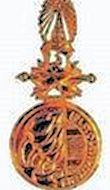
Zu National Artists (ศิลปินแห่งชาติ) werden ernannt:
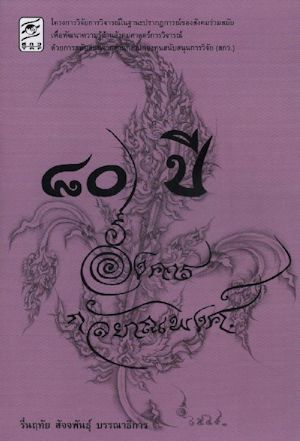
Abb.: Einbandtitel einer Festschrift für Angkarn Kalayanapong (นายอังคาร
กัลยาณพงศ์)
[Fair use]
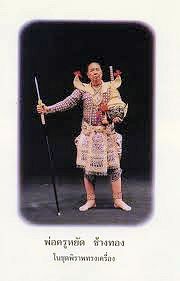
Abb.: Yat Changthong (นายหยัด ช้างทอง)
[Fair use]
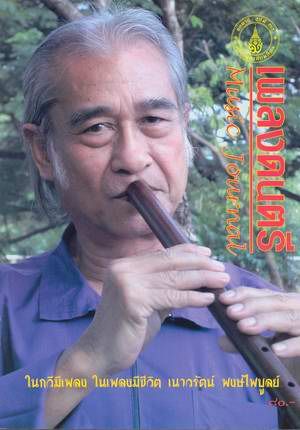
Abb.: Zeitschriftentitel über Pravet Kumut (นายประเวศ
กุมุท)
[Fair use]
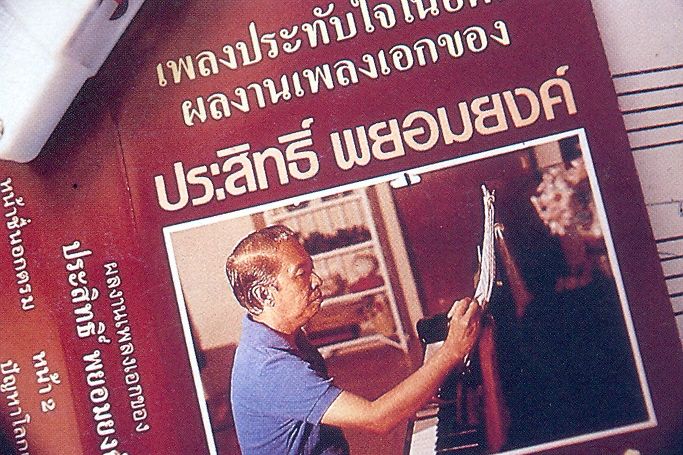
Abb.: Kassetten-Titel von Prasit Phayomyong
(นายประสิทธิ์ พยอมยงค์)
[Fair use]
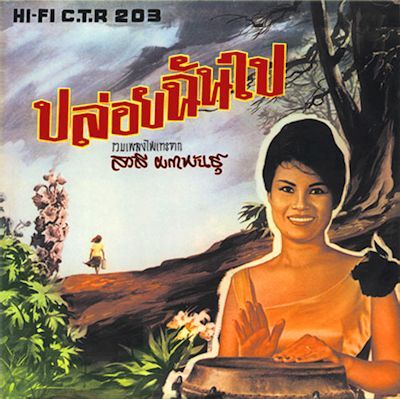
Abb.: Plattentitel von Sherry Savettanan (นางเชอร์รี่ เศวตนันทน์
/ ฮอฟแมนน์ = Sawali Phakaphan
- สวลี ผกาพันธุ์)
[Fair use]
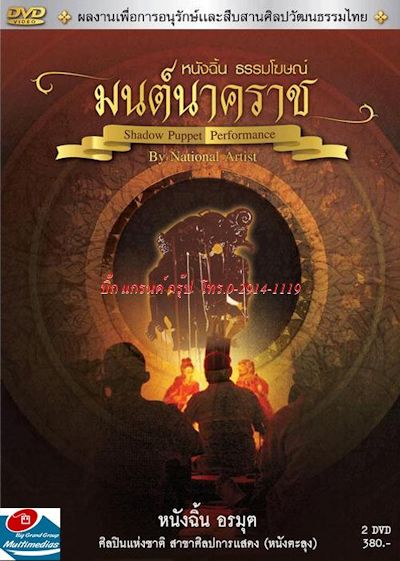
Abb.: DVD-Titel von Chin Oramut (นายฉิ้น อรมุต)
[Fair use]
1989-03-01
Bangkok Post: Suthon Sukphisit (สุธน สุขพิสิฐี): From an office worker to famous wood carver and designer
Über Worachet Pinchoo (gest. 1995), Chiang Mai, einen Holzschnitzer. Er bearbeitet (illegal) Teak-Holz. Bis vor 10 Jahren war er Büroangestellter, dann sattelte er auf Holzschnitzer um. Seine Kunden kommen meist aus Bangkok. Für einen Wandschmuck mit einem Thema aus dem Rāmāyana (1 x 2 m) braucht er ca einenhalb Monate und verlangt 15.000 Baht. Pro Monat verdient er 6000 bis 7000 Baht.
Abb.: Holzschnitzer (nicht Worachet Pinchoo !), Bangkok, 2000
[Bildquelle: Tamara. -- http://www.flickr.com/photos/tamouse/169972688/. -- Zugriff am 2012-09-19. -- Creative Commons Lizenz (Namensnennung, keine kommerzielle Nutzung, share alike)]
1989-03-02


"The Far Eastern Economic Review reported that in 1989, us ‘officials warned that if Thailand abandoned the Cambodian resistance and its leader Sihanouk for the sake of doing business with Phnom Penh it would have to pay a price’." [Quelle: Kiernan, Ben <1953 - >: How Pol Pot came to power : Colonialism, nationalism, and communism in Cambodia, 1930 - 1975. -- 2. ed. -- New Haven : Yale UP, 2004. -- 430 S. : Ill. ;21 cm. -- ISBN 978-0-300-10262-8. -- S. XXIX. -- Fair use]
1989-03-15
Bangkok Post: Suthon Sukphisit (สุธน สุขพิสิฐี): Shrine builder keeps to old law
Über Künstler für chinesische Schreine. Das Gewerbe floriert. Die Keramikbruchstücke für die Mosaike werden aus Keramikplatten und Töpfen in spezialisierten Fabriken gebrochen.
Abb.: Chinesischer Schrein, Bangkok, 2006
[Bildquelle: Ahron de Leeuw. -- http://www.flickr.com/photos/ahron/173775285/. -- Zugriff am 2012-09-22. -- Creative Commons Lizenz (Namensnennung)]
1989-03-17
Bangkok Post: Suthon Sukphisit (สุธน สุขพิสิฐี): Th last of a paper-making tradition
Über Bang-orn Panurang, die letzte Thai, die noch Maulbeerbaum-Papier (กระดาษข่อย) herstellt (1997 hat sie als letzte ihrer Kunst das Gewerbe aufgegeben). Rohmaterial sind die Fasern von Streblus asper Lour. (ข่อย) Die Verabeitung von der Faser bis zum Papier dauert 10 Tage.
Abb.: Manuskript auf Maulbeerbaum-Papier (กระดาษข่อย)
[Bildquelle: Metaknowledge / Wikimedia. -- GNU FDLicense]
Abb.: Abb.: Manuskript auf Maulbeerbaum-Papier (กระดาษข่อย), 1813
[Bildquelle: Hiart / Wikimedia. -- Public domain]
Abb.: Streblus asper Lour. (ข่อย)
[Bildquelle: Flora de Filipinas, 1880]
"Streblus asper, manchmal Khoi-Baum genannt, ist eine Pflanzenart aus der Familie der Maulbeergewächse (Moraceae). Sie ist in trockenen Regionen in Thailand, Indien, Malaysia und Vietnam heimisch. Beschreibung
Streblus asper wächst als mittelgroßer Baum oder Strauch. Die dunkelgraue Borke ist rau. Die Rinde ist kurz steif behaart und besitzt anfangs auffällige Lentizellen.
Die wechselständig und zweizeilig an den Zweigen angeordneten Laubblätter sind sitzend oder kurz gestielt. Die ledrigen, rauen Blattspreiten sind bei einer Länge von 2,5 bis 6 Zentimeter und einer Breite von 2 bis 3,5 Zentimeter elliptisch-verkehrt-eiförmig bis elliptisch mit stumpfer bis mehr oder weniger herzförmiger Spreitenbasis und stumpfem bis kurz zugespitztem oberen Ende. Der Blattrand ist glatt oder unregelmäßig gekerbt. Es sind vier bis sieben Seitennerven auf beiden Seiten des Mittelnerves vorhanden. Die kleinen Nebenblätter fallen früh ab.
In China reicht die Blütezeit von Februar bis April. Streblus asper ist einhäusig (monözisch) oder zweihäusig (diözisch) getrenntgeschlechtig. Die männlichen Blüten sind kugelig und haben eine grünlich-gelbe Farbe. Die weiblichen Blüten hingegen sind grün.
In China reifen die Früchte zwischen Mai und Juni.
Nutzung Verwendung des PapiersStreblus asper wurde in der Papierherstellung in Thailand 700 Jahre lang als Rohstoff für das sogenannte Khoi-Papier genutzt. Praktisch alle der alten Thai-Dokumente, die noch vorhanden sind, wurden auf Khoi-Papier geschrieben.
Das Papier ist auch in der lokal hohen Luftfeuchtigkeit haltbar. Es ist nicht leicht brennbar und beständig gegen Vergilben und Insektenbefall. Heute werden allerdings andere Faserquellen verwendet, um Papier herzustellen. Die Fasern von Streblus asper werden heute in erster Linie von Handwerkern verwendet, die mit traditionellen Techniken Papier produzieren. In Vietnam werden die grob strukturierten Blätter als natürliches Sandpapier zur traditionellen Holzbearbeitung verwendet."
[Quelle: http://de.wikipedia.org/wiki/Streblus_asper. -- Zugriff am 2012-09-22]
1989-03-21 - 2012-03-06
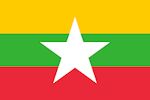
Waffenstillstandsabkommen zwischen der Regierung Myanmars und den verschiedensten Rebellenorganisationen.
Waffenstillstandsabkommen 1989 - 2012:
Abb.: In der Tabelle genannte Staaten
[Bildquelle: CIA. -- Public domain]
Effective date Organization Region Notes 1989-03-21 Myanmar National Democratic Alliance Army (MNDAA)
မြန်မာအမျိုးသား ဒီမိုကရက်တစ် မဟာမိတ်တပ်မတော်Special Region 1, Shan State မိူင်းတႆး
Kokang-led, split from the Communist Party of Burma 1989-05-09 United Wa State Army (UWSA) ဝပြည် သွေးစည်းညီညွတ်ရေး တပ်မတော်
Special Region 2, Shan State မိူင်းတႆး
Also known as the Myanmar National Solidarity Party, split from the Communist Party of Burma 1989-06-30 National Democratic Alliance Army (NDAA) Special Region 4, Shan State မိူင်းတႆး
1989-09-02 Shan State Army (SSA) Special Region 3, Shan State မိူင်းတႆး
1989-12-15 New Democratic Army (Kachin) (NDA-K) Special Region 1, Northeast Kachin State ကချင်ပြည်နယ်
1991-01-13 Kachin Defence Army (KDA) Special Region 5, Northern Shan State မိူင်းတႆး
Former 4th Brigade of the Kachin Independence Organization 1991-04-11 Pa-O National Organization (PNO) ပအိုဝ့်အမျိုးသား လွတ်မြောက်ရေး အဖွဲ့
Special Region 6, Southern Shan State မိူင်းတႆး
1991-04-21 Palaung State Liberation Army (PSLA) Special Region 7, Northern Shan State မိူင်းတႆး
1992-02-27 Kayan National Guard (KNG) Special Region 1, Kayah State ကယားပြည်နယ်
1994-02-24 Kachin Independence Organization (KIO) ကချင်ပြည် လွတ်မြောက်ရေး အဖွဲ့
Special Region 2, Kachin State ကချင်ပြည်နယ်
Ceasefire broke down on 9 June 2011, when fighting resumed. 1994-05-09 Karenni State Nationalities Peoples' Liberation Front (KNPLF) Special Region 2, Kayah (Karenni) State ကယားပြည်နယ်
1994-07-26 Kayan New Land Party (KNLP) Special Region 3, Kayah (Karenni) State ကယားပြည်နယ်
1994-10-09 Shan State Nationalities Peoples' Liberation Organization (SSNPLO) Southern Shan State မိူင်းတႆး
1995-07-27 New Mon State Party (NMSP) Mon State တွဵုရးဍုၚ်မန်၊ ရးမညဒေသ
1995 Democratic Karen Buddhist Army (DKBA) တိုးတက်သော ဗုဒ္ဓဘာသာ ကရင်အမျိုးသား တပ်ဖွဲ့
Karen State ကရင်ပြည်နယ်
1995 Mongko Region Defence Army (MRDA) Shan State မိူင်းတႆး
Split from Myanmar National Democracy Alliance Army 1995 Shan State National Army (SSNA) Shan State မိူင်းတႆး
1996 Karenni National Defence Army (KNDA) Karen State ကရင်ပြည်နယ်
Split from KNPP 1997 Karen Peace Force (KPF) Karen State ကရင်ပြည်နယ်
Former 16th Battalion of the Karen National Union 1997 Communist Party of Burma (Arakan Province)(CPB) Rakhine State ရခိုင်ပြည်နယ်
1997 Mon Mergui Army (MMA) Mon State တွဵုရးဍုၚ်မန်၊ ရးမညဒေသ
Split from New Mon State Party 1997 KNU Special Region Group Toungoo (KNU) Bago Division ပဲခူးတိုင်းဒေသကြီး
2005 Karenni National Progressive Party (KNPP) Kayah State ကယားပြည်နယ်
Ceasefire broke down within 3 months 2006 Shan State Army – South (SSA-South) ရှမ်းပြည် တပ်မတော် (တောင်ပိုင်း)
Shan State မိူင်းတႆး
2007 New Democratic Army-Kachin (NDAK) Kachin State ကချင်ပြည်နယ်
2007 Kayan National Liberation Army (KNLA) Karen State ကရင်ပြည်နယ်
Former 7th Battalion of the Karen National Union 2011-11-03 Democratic Karen Buddhist Amy (DKBA) 3rd Brigade Karen State ကရင်ပြည်နယ်
Fighting resumed on 19 February 2012. 2011-11-05 Kaloh Htoo Baw armed group Karen State ကရင်ပြည်နယ်
Former DKBA 2011-11-19 Chin National Front
Karen National Union
Shan State Army-South- Informal ceasefire agreement.
Despite a ceasefire agreement in place, fighting is still occurring between the Tatmadaw and SSA-South rebel troops, as of March 2012.2012-01-08 Chin National Front (CNF) Chin State ချင်းပြည်နယ်
2012-01-17 Restoration Council of Shan State (RCSS) Shan State မိူင်းတႆး
Political arm of Shan State Army 2012-01-28 Shan State Progressive Party (SSPP) Shan State မိူင်းတႆး
Political arm of the Shan State Army 2012-01-31 New Mon State Party (NMSP) Mon State တွဵုရးဍုၚ်မန်၊ ရးမညဒေသ
2012-02-07 Karen National Union (KNU) ကရင် အမျိုးသား အစည်းအရုံး
Karen State ကရင်ပြည်နယ်
2012-03-06 Karenni National Progressive Party (KNPP) Kayah State ကယားပြည်နယ်,
[Quelle der Tabelle: http://en.wikipedia.org/wiki/Ceasefires_in_Burma. -- Zugriff am 2013-11-18]
1989-03-22
Somchai Khunpluem (สมชาย คุณปลื้ม, 1937 - ), besser bekannt als Kamnan Poh (กำนันเป๊าะ), wird Bürgermeister von Bang Saen (บางแสน), Provinz Chonburi (ชลบุรี). Er ist eine bekannte Person der Unterwelt ("godfather" of Chonburi).
Abb.: Lage von Bang Saen (บางแสน)
[Bildquelle: OpenStreetMap. -- Creative Commons Lizenz (Namensnennung, share alike)]
1989-03-22
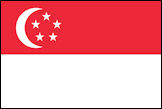
Singapur verschärft sein Aufenthaltsgesetz. Tausende von illegalen Thai-Arbeitern verlassen fluchtartig das Land, da sie Haft und Prügelstrafen befürchten müssen.
Abb.: Lage von Singapur
[Bildquelle: OpenStreetMap. -- Creative Commons Lizenz (Namensnennung, share alike)]
1989-03-26

Erste Freie Wahlen in der Sowjetunion seit ihrem Bestehen. Als Präsident gewählt wird Boris Nikolajewitsch Jelzin (Борис Николаевич Ельцин, 1931 - 2007).
Abb.: Boris Nikolajewitsch Jelzin (Борис Николаевич Ельцин) / von Murray Webb (1947 - ), 2007
[Bildquelle: Boris Yeltsin. 24 April, 2007.. Webb, Murray, 1947- :[Digital caricatures published from 29 July 2005 onwards (2006, 2007, 2008). Includes a selection of digital caricatures published from 2002 and up to July 2005.]. Ref: DCDL-0003243. Alexander Turnbull Library, Wellington, New Zealand. http://natlib.govt.nz/records/22916617. -- Zugriff am 2013-03-09. -- "You can copy this item for personal use, share it, and post it on a blog or website. It cannot be used commercially without permission"]
Abb.: Lage der Sowjetunion (bis 1991)
[Bildquelle: CIA. -- Public domain]
1989-04
Erstes Phanom Rung Festival im 1988-05-21 eröffneten Phanom Rung Historical Park (อุทยานประวัติศาสตร์พนมรุ้ง)
Abb.: Lage des Phanom Rung Historical Park (อุทยานประวัติศาสตร์พนมรุ้ง)
[Bildquelle: OpenStreetMap. -- Creative Commons Lizenz (Namensnennung, share alike)]
Abb.: Phanom Rung Historical Park (อุทยานประวัติศาสตร์พนมรุ้ง)
[Bildquelle: Kim Seng. -- http://www.flickr.com/photos/captainkimo/4716157476/. -- Zugriff am 2014-08-27. -- Creative Commons Lizenz (Namensnennung, keine kommerzielle Nutzung, keine Bearbeitung)]
1989-04
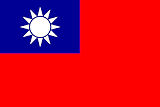
Gedenktafel am Kriangsak House in Mae Salong [แม่สลอง, heute: Santikhiri: สันติคีรี]
Abb.: Lage von Mae Salong [แม่สลอง, heute: Santikhiri: สันติคีรี]
[Bildquelle: OpenStreetMap. -- Creative Commons Lizenz (Namensnennung, share alike)]
"The Story of Kriangsak Hall and Kriangsak House In the year B. E. 2512 [1969] a group of Thai military led by Air Force General Thawi Chulasap [ทวี จุลละทรัพย์, 1914 - 1996] went for discussions with the Ministry of Home Affairs in Taiwan. The result of these talks was that the Government of Taiwan gave into the care of the Government of Thailand those Chinese Nationalist soldiers who were still living on Thai territory, with the Supreme Command Headquarters being responsible. At that time Headquarters had announced the appointment of Lieutenent-General (his rank then) Kriangsak Chamanan [เกรียงศักดิ์ ชมะนันทน์, 1917 - 2003] as Supreme Commander.
In
2516 [1973] Lieutenant-General Kriangsak Chamanan visited, bringing with him tea from Taiwan for planting in Mae Salong [แม่สลอง] and Tham Ngop [ถ้ำง๊อบ], as the climate seemed most suitable. The project first planted sic million bushes and in B. E. 2517 [1974] a trial planting of 18,000 pine trees (Pinus khasya) was made. In 2518 [1975] another 20,000 trees were planted, and the suggestion was made that a Chinese- style hall should be build in the pine forest to be used as an administrative centre for the pine tree project. This is still used as a meeting place for conversation and drinking tea among friends in natural surroundings of peace and quiet. This hall was duly built in the year B. E. 2518 [1975].Later, a guesthouse was built to receive military officers and senior government servants who came on official business. This was completed in B. E. 2522 [1979] and was officially handed over to the government on 22 August 2522 in the person of General Kriangsak Chamanan, who was then Prime Minister. He then led the people in planting another 1800 pine trees around the hall and the guesthouse. Thus Kriangsak Hall and Kriangsak House acquired their names."
[Übersetzung: Gehan Wijeyewardene <1932 - 2000>. -- In: National identity and its defenders : Thailand today / ed. Craig J. Reynolds. -- rev. ed. [der ed. 1991]. -- Chiang Mai : Silkworm, 2002. -- 357 S. : Ill. ; 22 cm. -- ISBN 9747551888. -- S. 143. -- Fair use]
1989-04-04


Der König bestätigt die Wahl von Somdet Phra Nyanasamvara (Charoen Suvaddhano) (สมเด็จพระญาณสังวร (เจริญ สุวฑฒฺโน), 1913 - ) zum Sangharaja (พระสังฆราช).
Abb.: Somdet Phra Nyanasamvara - สมเด็จ พระญาณสังวรบรมนริศรธรรมนีติภิบาล อริยวงศาคตญาณวิมล สกลมหาสังฆปริณายก ตรีปิฎกปริยัตติธาดา วิสุทธจริยาธิสมบัติ สุวัฑฒนภิธานสงฆวิสุต ปาวจนุตตมพิสาร สุขุมธรรมวิธานธำรง วชิรญาณวงศวิวัฒ พุทธบริษัท คารวสถาน วิจิตรปฏิภาณพัฒนคุณ วิบุลสีลาจารวัตรสุนทร บวรธรรมบพิตร สรรพคณิศรมหาปธานาธิบดี คามวาสีอรัณยวาสี สมเด็จพระสังฆราช
[Bildquelle: th.Wikipedia. -- Fair use]
"Somdet Phra Nyanasamvara (Charoen Suvaddhano) (th: สมเด็จพระญาณสังวร (เจริญ สุวฑฒฺโน); RTGS: Somdet Phra Yannasangwon (Charoen Suwatthano)) (born 3 October 1913) is the 19th and incumbent Supreme Patriarch of Thailand. Assuming such position since 1989 in the reign of Bhumibol Adulyadej. Name & Title
- Birth name Charoen Khotchawat (th: เจริญ คชวัตร)
- Religious Nickname Suvaddhano (th: สุวฑฺฒโน, the Wholesomely Advanced One)
- Formal Title Somdet Phra Nyanasamvara (Charoen Suvaddhano), the Supreme Patriarch of Thailand (th: สมเด็จพระญาณสังวร (เจริญ สุวฑฺฒโน) สมเด็จพระสังฆราช สกลมหาสังฆปรินายก)
Early life
- Full Title Somdet Phra Nyanasamvara Borommanaritsatammanitiphiban Ariyawongsakhatayanawimon Sakonlamahasangkhaparinayok Tripidokpariyattithada Wisutthachariyathisombat Suwatthanaphithanasangkhawisut Pawachanuttamaphisan Sukhumthammawithanthamrong Wachirayannawongsasiwat Phutthaborisat Kharawasathan Wibunsilacharawattrasunthon Bowonthammabophit Sapphakhanison Mahapathanathibodi Khamawasiaranyawasi Somdet Phra Sangkharat (th:สมเด็จ พระญาณสังวรบรมนริศรธรรมนีติภิบาล อริยวงศาคตญาณวิมล สกลมหาสังฆปริณายก ตรีปิฎกปริยัตติธาดา วิสุทธจริยาธิสมบัติ สุวัฑฒนภิธานสงฆวิสุต ปาวจนุตตมพิสาร สุขุมธรรมวิธานธำรง วชิรญาณวงศวิวัฒ พุทธบริษัท คารวสถาน วิจิตรปฏิภาณพัฒนคุณ วิบุลสีลาจารวัตรสุนทร บวรธรรมบพิตร สรรพคณิศรมหาปธานาธิบดี คามวาสีอรัณยวาสี สมเด็จพระสังฆราช)
Somdet Phra Nyanasamvara, the 19th monk since the reign of Rama I to hold the title of Supreme Buddhist Patriarch (Sangharaja) of Thailand, was born on October 3, 1913 in Kanchanaburi Province (กาญจนบุรี), Thailand (at about 4 a.m. (in the modern calendar, October 4)). Even as a child he was very interested in religion and monastic life; it is said that, as a child, he liked dressing up like a monk, and giving 'sermons' to his friends and family. He completed the equivalent of the 5th grade at a temple school near his home, and was then ordained as a Buddhist novice (samanera) at the age of 14. Instruction in Pali and other fundamentals of Buddhist education were not readily available in his home province (a common problem in Thailand during the early 20th century), so Somdet Nyanasamvara traveled to a temple at Nakhon Pathom (นครปฐม), 70 km away, where he spent two years studying Pali and Buddhist philosophy. He then moved to Wat Bovoranives (วัดบวรนิเวศวิหารราชวรวิหาร) in Bangkok, an important temple in the emergent Dhammayutt Order (Thai: ธรรมยุติกนิกาย, Thammayuttika) reform movement, where he completed his basic studies and completed the highest level of Pali studies then available. In 1933, Somdet Nyanasamvara returned to his old temple in Kanchanaburi to be ordained as a full-fledged monk (bhikkhu). After passing the better part of a year there, he again traveled to Wat Bovoranives, where he was re-ordained into the Dhammayutt Order, under the supervision of the 13th Thai Supreme Patriarch. During this period in Thailand, it was not uncommon for monks to seek re-ordination under the Dhammayutt Order if their initial ordination had been through a Mahanikaya lineage (มหานิกาย); the Dhammayutt Order was considered by many to be more careful in its observance of disciplinary rules, and enjoyed great support from the Thai monarchy.
Rise through the ranksFollowing his full ordination, Somdet Nyanasamvara rose quickly through the ranks of the Thai Sangha. As Thai ecclesiastic titles often take the form of additions or alterations to monastic names, this necessitated a variety of changes of name and title during the next several years. In 1956, at the age of 43 and under the titular name Phra Dhammavarabhorn, he was appointed guardian and advisor to King Rama IX (Bhumibol Adulyadej) during his royal ordination (by tradition, all Thai monarchs serve as Buddhist monks prior to gaining the throne). Five years later, Somdet Nyanasamvara was named abbot of Wat Bovoranives.
In 1972, he was given the title Somdet Phra Nyanasamvara, the same basic title that he bears today. This was a special monastic title that had not been granted to a Thai bhikkhu in over 150 years. The granting of this title placed Somdet Phra Nyanasamvara in the top tier of the Thai monastic establishment, and set the stage for his being named Supreme Buddhist Patriarch of Thailand (Sangharaja, or "Lord of the Sangha") in 1989 by the king and queen of Thailand.
Achievements and challengesDuring his more than seventy years as a monk and novice, Somdet Nyanasamvara has held a variety of posts in the Thai ecclesiastic hierarchy. In these roles, he has always been concerned with promoting education, both religious and secular. He has assisted in the founding and construction of numerous schools, as well as sponsoring campaigns to build schools, temples, and hospitals in rural communities.
As abbot of Wat Bovoranives, he oversaw the renovation and expansion of this famed century-old monastery. Long interested in the meditation techniques of the Thai forest monks, Somdet Nyanasamvara has helped make his temple residence a center for meditation study and instruction in Bangkok, himself delivering lectures on meditation and Buddhist teachings on two Uposatha days each month.
Somdet Nyanasamvara has also been active in teaching to both non-Thais and the international Thai emigrant community. His recorded sermons and teachings are distributed among Thais living outside Thailand, particularly in areas where there is not access to temples or Theravada monks. Non-Thais have also been encouraged to study Buddhism; Wat Bovoranives is known as one of several monasteries in Thailand where Westerners can not only study, but also ordain either as full bhikkhu, or for a limited term (such as vassa) as a novice (samanera). A number of Somdet Nyanasamvara's books and talks have also been translated into English, and he has been involved in sponsoring the establishment of temples and monasteries outside Thailand.
Somdet Phra Nyanasamvara’s tenure has probably been exposed to more criticism and controversy than that of any preceding Thai Sangharaja. A number of Thai monks – among them some prominent and popular religious leaders – became embroiled in scandal, with allegations ranging from sexual misconduct to corrupt fundraising schemes and involvement in organized crime. Changes in Thai society wrought by modernization began to impose on the traditional and conservative Sangha as well – including calls for greater rolls for laypeople and younger monks in religious affairs, and organized efforts both in Thailand and abroad to re-create the lost Theravada bhikkhuni (nun-priest) ordination.
Because of the convoluted governing structure of the Thai Sangha (which includes both ecclesiastic and civil officials) and the Patriarch’s health problems, it is difficult to determine what, if any, role that Somdet Nyanasamvara has played in formulating a response to these challenges. Certainly, the course held by the Council of Elders has not strayed during his tenure; they continue to defrock those monks found guilty of the most flagrant offenses, and to strongly oppose any change in the official status of women in the Sangha. The Council (and, by implication, Somdet Nyanasamvara) have received criticism for not taking a more proactive role in reforming disciplinary standards and eliminating corruption.
Like its predecessors, the Council of Elders under Somdet Nyanasamvara has been very conservative and reluctant to act without great deliberation. There are some indications that this may be the best course for maintaining the confidence of the lay public; in the United States, for instance, some temples that have attempted to change the roles of Theravada monks have been met by a strong backlash from their lay communities. However, the troubles of the Catholic Church in the United States have offered a model of the possible consequences of failing to deal openly and swiftly with corruption and misconduct: an eventual meltdown, made worse by stop-gap attempts to preserve the people’s faith in religious institutions, rather than dealing openly with problems.
Furthermore, educated Buddhist women and their supporters – Thais, Westerners, and others – continue to call for an expanded role for female Buddhists, with many calling for a rebirth of the Theravada bhikkhuni lineage. They are joined in this call not only by some laymen, but by an increasing number of progressive monks. Some supporters of the recreation of the bhikkhuni lineage have already begun to take action, ordaining Buddhist nuns through recourse to the existing Chinese bhikkhuni lineage. The Council and secular authorities have condemned these actions, going so far as to arrest for impersonation of a member of the clergy at least one Thai woman who underwent the new bhikkhuni ordination (ordained bhikkhu have a different civil status in Thai society than non-ordained female followers, such as the mae jis - แม่ชี).
The actions of Somdet Nyanasamvara and his Council (or, more likely, his successor and his Council) during the next few years may have a lasting impact on the Thai Sangha – either by beginning to resolve the troublesome questions that have arisen during the last half of the 20th century, or by deepening what could prove to be a pending crisis for Theravada as a whole.
Later lifeBy the late 1990s, the Patriarch’s health was in serious decline. In early 1999, he stopped attending meetings of the Sangha Council. His attendant and advisors and the other members of the council increasingly managed the day-to-day workings of the Thai Sangha without direct leadership from Somdet Nyanasamvara. By 2003, it was clear that the 90 year old Sangharaja was unable to effectively fill the position to which he had been appointed. The government felt obliged to act, and appointed a committee of senior monks (selected by monastic rank, not age) to act on behalf of the Sangharaja. The move received widespread support; a poll conducted among Thai monks found that more than 70% supported the appointment of a representative for the Supreme Patriarch. Given the challenges facing the Thai Sangha, the appointment of the representative council seemed like an excellent move. Since the committee had the power to act on behalf of the patriarch, they had the opportunity to take up issues that may have been neglected during the absence of the Sangha Council's senior-most member.
However, the appointment of a committee to represent the Supreme Patriarch was not without some controversy. Monks close to Somdet Nyanasamvara's camp protested the move as a violation of Thailand's Sangha Act. Government officials countered that these individuals, fearing a loss of prestige or influence if the aging Patriarch was circumvented, were putting their own interests ahead of those of the Sangha. The controversy was further convoluted by lingering debates over the appointment of a second Sangharaja – one for the Dhammayutt Order, and one for the Mahanikaya Order. Some saw the appointment of the committee as an attempt to surreptitiously pave the way for a second patriarch, suspicions the government was quick to dismiss.
The Supreme Patriarch allowed materials from his temple, such as ash from incense and powder from bricks, to be made into controversial Jatukham Rammathep (จตุคามรามเทพ) amulets. The popularity of the amulets, which are believed to have magical powers and cost up to 600,000 baht apiece, was such that in April 2007, a woman was crushed to death when thousands of people rushed into a school in Nakhon Si Thammarat (นครศรีธรรมราช) to buy coupons they could exchange for the amulets. A few weeks after the death, the Supreme Patriarch stopped providing materials for the amulets.
In early 2004, Nyanasamvara was admitted to Chulalongkorn Hospital (โรงพยาบาลจุฬาลงกรณ์) in Bangkok. He has continued to reside at the hospital since then, making only 2 public appearances outside the hospital- the latest in October 2005 to bestow blessings at a ceremony marking his 92nd birthday. By 2005, concerns about the role that the representative council would take were increasingly eclipsed by debate over succession. With the Patriarch’s health continuing to decline, focus increasingly turned to Somdet Kiaw (เกี่ยว, known formally as Somdet Phutthacharn - สมเด็จพุฒาจารย์)), abbot of Wat Saket (วัดสระเกศราชวรมหาวิหาร). By the terms of Thailand’s religious law – modified in 1991 to take the choice of the patriarch away from the king – Somdet Kiaw would become the next Sangharaja automatically. This development was vocally opposed by Phra Maha Bua (หลวงตามหาบัว), a popular monk often believed to be an enlightened arhat. Phra Maha Bua’s supporters claimed that Somdet Kiaw earned his high position in the Sangha hierarchy through corruption and abuse of power, and that he deserved to be defrocked rather than promoted. The controversy gained national prominence when Sondhi Limthongkul (สนธิ ลิ้มทองกุล) and his People's Alliance for Democracy used it to criticize the Thaksin Shinawatra (ทักษิณ ชินวัตร) government.
The rancorous succession debate has brought to the forefront long-standing complaints against the amended 1962 Sangha Act (sometimes called the Ecclesiastic Bill) that defines the structure and governance of the Thai Sangha. Created during a period of military dictatorship, the 1962 Sangha Act stripped out democratic reforms that had accompanied King Mongkut’s doctrinal and disciplinary reforms. The act lent greater power to the roll of the Sangharaja, and structured the Sangha along according to a strict hierarchy that stifled dissent and provided few significant roles for younger monks. Thus, while Somdet Nyanasamvara’s health has prevented him from taking an active role in reforming the Thai Sangha during the past several years, his death may prompt the biggest reform of all: the creation of a new Sangha Act that will define a more democratic leadership structure for Thailand’s largest religious organization."
[Quelle: http://en.wikipedia.org/wiki/Nyanasamvara,_19th_Supreme_Patriarch_of_Thailand. -- Zugriff am 2011-12-12]
1989-04-21
In Japan kommt der erste ®Nintendo Game Boy ((ゲームボーイ) auf den Markt. Der Game Boy wird bei den Kindern wohlhabender Thais zum Suchtmittel.
Abb.: Erste Version des ®Game Boy
[Bildquelle: Wikipedia. -- Public domain]
1989-04-22

Abb.: Sanitsuda Ekachai (สนิทสุดา เอกชัย)
[Bildquelle: FAO]Bangkok Post: Sanitsuda Ekachai (สนิทสุดา เอกชัย, 1955 - ): "Traditional massage helps put paralysed villagers on their feet.
Über Abt Phra Samai Apataro (สมัย อาภาธโร = Phra Khru Uppakara Pattanakij - พระครูอุปการ
พัฒนกิจ ) und sein Wat Nong Yah Nang (วัดหนองหญ้านาง), Tambon Nong Phai Baen (นองไผ่แบน), Amphoe Mueang (อำเภอเมือง), Provinz Uthai Thani (อุทัยธานี). Dieses Kloster ist eines der wenigen in Thailand, die noch traditionelle medizinische Behandlung für die Bauern anbieten. Der Abt stellt die Diagnose und verschreibt Kräutermedizin, die Behandlung (Massage u. a.) machen Laien. Spezialität des Klosters ist Massagetherapie und Kräutersauna bei Lähmungen. Die Behandlung ist kostenlos, nur für Medizinalkräuter muss man zahlen. Die Therapeuten müssen sich verpflichten, keine Reklame zu machen, nicht zu betrügen und keine Bezahlung zu verlangen.Zeitweise beherbergt das Kloster über 100 Patienten.
"We feel more at home here," says farmer Lan, a father of eight. "At the hospital, I felt afraid of the personnel. People there are like strangers, aloof, distant. Some even show they are annoyed. The doctors are also like strangers. They come to visit for only a short period of time each day and then they're gone. They don't allow relatives to stay with us. And I cannot eat the hospital's food. I felt I was being left alone. There were no familiar faces, no massages, no activities, just injections and lying still in bed. I felt terrible. Things are also expensive. And we are just poor farmers. I stayed only one week and it cost us 18.000 Baht." [Lan. -- Zitiert in: Sanitsuda Ekachai (สนิทสุดา เอกชัย) <1955 - >: Keeping the faith : Thai Buddhism at the crossroads. -- Bangkok : Post Books, 2001. -- 322 S. : Ill. ; 23 cm. -- ISBN 974-228-016-9. -- S. 143f.]
Abb.: Lage von Tambon Nong Phai Baen (นองไผ่แบน)
[Bildquelle: OpenStreetMap. -- Creative Commons Lizenz (Namensnennung, share alike)]
1989-04-23
Obwohl Koh Phi Phi (เกาะพีพี) 1983 zum National Marine Park erklärt wurde, ist es bedroht, da es bei Touristen so beliebt ist.
Abb.: Lage von Koh Phi Phi (เกาะพีพี)
[Bildquelle: OpenStreetMap. -- Creative Commons Lizenz (Namensnennung, share alike)]
Abb.: Koh Phi Phi (เกาะพีพี), 2008
[Bildquelle: C-Fix / Wikipedia. -- GNU FDLicense]
"Ko Phi Phi (Ko, Thai เกาะ = Insel) ist eine Inselgruppe (Muh Ko Phi Phi – หมู่เกาะพีพี) in der Andamanensee vor der Westküste von Süd-Thailand – bestehend aus der Hauptinsel Ko Phi Phi Don (เกาะพีพีดอน) und der kleineren Nebeninsel Ko Phi Phi Leh (เกาะพีพีเล). Im Norden liegen die kleineren Inseln Ko Mai Phai (Bambus-Insel, เกาะไม้ไผ่) und Ko Yung (Moskito-Insel, เกาะยุง), welche lediglich von einigen Fischern bewohnt sind. Im Süden befinden sich die unzugänglichen Felsen-Inseln Ko Bida Nai (เกาะบิด็ะใน) und Ko Bida Nok (เกาะบิด็ะนอก). Sie sind wegen der Artenvielfalt der umgebenden Korallenriffe und steilen Wände – die bis zu 24 Meter in die Tiefe reichen – bei Tauchern sehr beliebt.
Gemeinsam bilden sie den 390 km² großen Hat Noppharat Thara Marine National Park (อุทยานแห่งชาติหาดนพรัตน์ธารา) im Amphoe Mueang, Provinz Krabi und bieten ein ideales Umfeld für Wasser- und Tauchsportaktivitäten vor dem Hintergrund hoch aufragender, von den Naturgewalten skurril bearbeiteter Felsformationen. Doch der Tourismus, darunter viele Tagesbesucher, bedroht die empfindliche Ökostruktur der, für diese Massen, zu kleinen Inseln. Vor allem das Müllproblem scheint den einheimischen Behörden über den Kopf zu wachsen. So musste die Filmcrew von „The Beach“ erst drei Kubikmeter Unrat beseitigen, soll aber selbst für erhebliche Umweltschäden, auch bei den Korallenriffen, gesorgt haben."
[Quelle: http://de.wikipedia.org/wiki/Phi_Phi. -- Zugriff am 2011-12-12]
1989-04-26 - 1994-04-25

Tuanku Muhibuddin Azlan Shah ibni al-Marhum Yusuf Izzuddin Shah Ghafarullahu-Lah (1928 - ) ist König (Yang di-Pertuan Agong) von Malaysia
1989-04-27

Tod des neusseländischen Anthropologen William Robert (Bill) Geddes (1916-1989),
"Geddes believed that anthropologists should play a role in practical affairs in their areas of expertise. Between 1957 and 1962 he had undertaken three spells of field-work among one of the ethnic minorities of northern Thailand—hill tribesmen in and at the margins of the Golden Triangle. In 1964-65 he was adviser to the Tribal Research Centre set up in Chiang Mai by the Thai government. His major monograph, Migrants of the Mountains: The Cultural Ecology of the Blue Miao (Hmong Njua) of Thailand (1976), discussed the economic and cultural role of opium among the Miao (Hmong) in particular and the hill tribes in general. He was a member of United Nations study missions on opium in 1966-67 and 1970; for the latter he drew up a plan for alternative crops. In the New York Review of Books of 19 November 1970 two anthropologists alleged that data collected by the TRC was being used by the Thai and American governments for counter-insurgency purposes in South-East Asia. Australian activists opposed to the Vietnam War accused Geddes of complicity, leading him to take legal action that resulted in an out-of-court settlement in his favour and a public retraction. Some anthropologists asked, more generally, whether accepting any government or private contracts threatened academic autonomy and free inquiry. The `Thailand controversy’ added to existing tensions in the anthropology department in Sydney." [Quelle: Jack Golson. -- In: Australian Dictionary of Biography. -- Volume 17, (MUP), 2007. -- Online: http://adb.anu.edu.au/biography/geddes-william-robert-bill-12529. -- Zugriff am 2016-05-24. -- Fair use]
1989-05
Abb.: Sanitsuda Ekachai (สนิทสุดา เอกชัย)
[Bildquelle: FAO]Bangkok Post: Sanitsuda Ekachai (สนิทสุดา เอกชัย, 1955 - ): "Tourism in, fishermen out"
Über die Insel Koh Muk (เกาะมุก, 200 vorwiegend muslimische Fischer-Familien), Provinz Trang (ตรัง). Koh Muk liegt 30 Bootsminuten vom Nationalpark Hat Chao Mai (อุทยานแห่งชาติหาดเจ้าไหม). Deshalb zog die Insel in den letzten drei Jahren Grundstückspekulanten an. Die einheimischen Fischer haben zu weichen. Bisher hatten sie ihre Häuser am Strand bauen können, wo immer freier Platz war.
"They say it's their land. They say they bought it from the land officials in the city. Although we live here, we don't have the money to buy it."
Die Fischer müssen jetzt im Inland in den Mangroven-Wäldern wohnen. Ihre Boote sind unbewacht am Strand und werden oft gestohlen.
Die Fischer von Koh Muk mussten schon vor zwanzig Jahren von Fischen auf Krabben und Kalmare umstellen, weil die Schleppnetzfischer ihnen die Fische wegfischten. Diese nutzen sehr feine Netze, die oft die Fallen der Krabbenfischer wegreißen. Die Krabbenfischer müssen dann mit für sie hohe Kosten neue Fallen machen.
Abb.: Lage von Koh Muk (เกาะมุก)
[Bildquelle: OpenStreetMap. -- Creative Commons Lizenz (Namensnennung, share alike)]
Abb.: Schleppnetz-Fischer, Koh Muk (เกาะมุก), 2011
[Bildquelle: Zhu. -- http://www.flickr.com/photos/xiaozhuli/5375109611/. -- Zugriff am 2012-05-05. -- Creative Commons Lizenz (Namensnennung, keine kommerzielle Nutzung)]
Abb.: Koh Muk (เกาะมุก), 2002
[Bildquelle: Andrew Betts. -- http://www.flickr.com/photos/triblondon/417559204/. -- Zugriff am 2012-05-05. -- Creative Commons Lizenz (Namensnennung, keine kommerzielle Nutzung, share alike)]
1989-05
Bangkok Post: Sanitsuda Ekachai (สนิทสุดา เอกชัย, 1955 - ): "Fighting a no-win battle"
Hunderte von muslimischen Bewohnern des Dorfs Ban Chang Lang (บ้านฉางหลาง), Provinz Trang (ตรัง), werden von den Behörden aufgefordert, das 300 Jahre alte Dorf zu verlassen, da das Gebiet als zum Haad Chao Mai Marine National Park (อุทยานแห่งชาติทางทะเล หาดเจ้าไหม) gehörig erklärt wurde. Inzwischen lobbyieren Spekulanten, dass der Nationalpark in ein Touristen-Resort verwandelt wird. Da die Einheimischen keine Landurkunden haben, müssen sie bei Krediten an Zinsen 5% pro Monat (!) bezahlen. Dadurch sind sie hoch verschuldet, erpressbar und bestechlich.
"With the authorities at least there are some rules. With the money-barons bullets are the rules."
Abb.: Lage von Ban Chang Lang (บ้านฉางหลาง)
[Bildquelle: OpenStreetMap. -- Creative Commons Lizenz (Namensnennung, share alike)]
1989-05
Bangkok Post: Sanitsuda Ekachai (สนิทสุดา เอกชัย, 1955 - ): "Forests, fish, food - all gone"
Über das muslimische Fischerdorf Ban Laem Makham (บ้านแหลม
มะขาม) , Provinz Trang (ตรัง). Die Bewohner waren ursprünglich Fischer, doch seit zehn Jahren können sie nur noch Krabben und Kalmare fangen, da die Schleppnetzfischer mit ihren feinen Netzen alle Fische an der Küste weggefischt haben. Dynamitfischer schafften den Rest. Vor vierzig Jahren wurde der Mangrovenwald total abgeholzt für die beiden Holzkohle-Produzenten im Dorf. Die letzten Mangroven wurden illegal zerstört, um Platz zu machen für Garnelenfarmen."'It's as if they want to bully us Muslims,' mutters Mah Sani, than politely retracts her comment.
Their resentiment is understandable. On the other side are the trawlers, dynamite fishermen and greedy merchants who are Buddhist, a different faith from the fishing villagers. It seems they are allowed to get away with anything by the authorities who are of the same faith as well."
Abb.: Lage von Ban Laem Makham (บ้านแหลมมะขาม)
[Bildquelle: OpenStreetMap. -- Creative Commons Lizenz (Namensnennung, share alike)]
1989-05
Bangkok Post: Sanitsuda Ekachai (สนิทสุดา เอกชัย, 1955 - ): "When the resources run out"
Über die Einflüsse der großen Kautschukplantagen in der Provinz Phang Nga (พังงา) auf die Bevölkerung und das Klima. Die neuen Hochertrags-Kautschukbäume erlauben es nicht, dass unter ihnen andere Pflanzen gedeihen: solche würden zu einer Verschwendung der teuren Düngemittel führen. Bei den alten Sorten von Kautschuck-Bäumen hatte man in ihrem Schatten essbare Pflanzen angebaut. Die Arbeiter sind meist billige Wanderarbeiter aus Nordostthailand (อีสาน - Isan).
"Selfishness has replaced friendship and the sense of joy in sharing - those are the very precious things I miss the most."
Abb.: Lage der Provinz Phang Nga (พังงา)
[Bildquelle: OpenStreetMap. -- Creative Commons Lizenz (Namensnennung, share alike)]
1989-05
Bangkok Post: Sanitsuda Ekachai (สนิทสุดา เอกชัย, 1955 - ): "Crossing the border to work"
Über das Dorf Ban Khlong Song Pak (บ้านคลองสองปาก, 80 muslimische Familien), Provinz Satun (สตูล).
Die jungen Frauen gehen zweimal pro Jahr als Wanderarbeiterinnen nach Malaysia, um in den Reisfeldern zu arbeiten. Sie bringen nach einem Monat Arbeit 2000 Baht heim. Sie fühlen sich in Malaysia gut behandelt: drei Mahlzeiten täglich und Süßspeisen am Nachmittag.
Die jungen Männer gehen nach Malaysia, um für die zu arbeiten, die Konzessionen erhalten haben, Mangroven-Wälder abzuholzen. Sie werden im Akkord bezahlt und können bis zu 100 Baht pro Tag verdienen. Um hohe Akkordmengen zu erreichen, nehmen viele Männer ya ba (ยาบ้า), Amphetamin-Aufputschmittel.
In Ban Khlong Song Pak gibt es infolge des Geldflusses immer mehr betonierte Häuser, Fernsehapparate, Kühlschränke und Motorräder. Das ehemalige Fischer-Dorf hat voll auf Geldwirtschaft und Konsum umgestellt.
Abb.: Lage von Ban Khlong Song Pak (บ้านคลองสองปาก)
[Bildquelle: OpenStreetMap. -- Creative Commons Lizenz (Namensnennung, share alike)]
1989-05
Bangkok Post: Sanitsuda Ekachai (สนิทสุดา เอกชัย, 1955 - ): "Tourism means slum eviction"
Das Dorf Ban Kao Seng (บ้านเขาเก้าเส้ง) am Samila Strand (แหลมสมิหลา), Provinz Songkhla (สงขลา), wird zwangsumgesiedelt, um für Tourismus Platz zu machen. Ein neues einfaches Haus bauen, kostet 50.000 Baht. 1957 wurden die Fischer auf Befehl von Ministerpräsident Feldmarschall Sarit Thanarat (สฤษดิ์ ธนะรัชต์, 1908 - 1963) von Son On Jur nach Kao Seng zwangsumgesiedelt. Sarit war wütend, weil er am Strand von Son On Jur in Hundescheiße getreten war.
Im Nebenerwerb neben Fischerei für den eigenen Bedarf arbeiten die meisten Einheimischen für chinesische Unternehmer und reinigen Garnelen, Fisch und Tintenfisch zur Trocknung für den Export. Tagesverdienst: 30 Baht. 80% der Einwohner verdienen weniger als 3000 Baht pro Monat. Ein Drittel der Bewohner sind Kinder. Sanitäre Einrichtungen existieren kaum. Das Dorf ist eher ein Slum.
Im Dorf Ban Tha Sa-an (บ้านท่าสะอ้าน) nahe Kao Seng sind bereits 300 Familien zwangsumgesiedelt worden, um Platz zu schaffen für einen neuen Fischereihafen, der Sonkhla zum Zentrum der Fischereiindustrie von Thailands Süden machen soll.
"I can foresee more trouble coming for the poor. This is only the beginning."
Abb.: Lage von Ban Kao Seng (บ้านเขาเก้าเส้ง)
[Bildquelle: OpenStreetMap. -- Creative Commons Lizenz (Namensnennung, share alike)]
Abb.: Samila Beach (แหลมสมิหลา), 1980
[Bildquelle: Joe Coyle. -- http://www.flickr.com/photos/onbangladesh/3019411444/. -- Zugriff am 2012-05-05. -- Creative Commons Lizenz (Namensnennung, keine kommerzielle Nutzung)]
Abb.: Hafen von Songkhla (สงขลา) und Samila Beach (แหลมสมิหลา) (rechts)
[Bildquelle: ©Google earth. -- Zugriff am 2012-05-05]
1989-05
Bangkok Post: Sanitsuda Ekachai (สนิทสุดา เอกชัย, 1955 - ): "Pollution treatens farmers' livelihood"
Die Bewohner in Amphoe Chana (จะนะ / Chenok), Provinz Songkhla (สงขลา / Singgora), waren hocherfreut, als eine Fabrik zum Export (vor allem nach Japan) von Meeresfrüchten angesiedelt wurde. Diese Fabrik bietet über 1000 Arbeitsplätze. Die Kehrseite: Abwasser der Fabrik vergiftet die Reisfelder. In der Nähe verursacht eine Fischkonserven-Fabrik ähnliche Probleme. Die Dörfer sind gespalten zwischen denen, deren Reisfelder verseucht sind, und denen, deren Kinder in den Fabriken Arbeit finden.
"Having factories here is good because our children have to take jobs, because there is no more land for them to till. If the factories are here, at least they don't have to leave home to look for work."
"But if new jobs mean the loss of our old livelihood, than we don't think any of this is worth it."
Abb.: Lage von Amphoe Chana (จะนะ / Chenok)
[Bildquelle: OpenStreetMap. -- Creative Commons Lizenz (Namensnennung, share alike)]
Abb.: Wegen Fabrikabwässern 1989 regional nicht mehr möglich: Reisfelder, Provinz Songkhla (สงขลา / Singgora), 2008
[Bildquelle: IRRI. -- http://www.flickr.com/photos/ricephotos/2709856406/. -- Zugriff am 2012-05-05. -- Creative Commons Lizenz (Namensnennung, keine kommerzielle Nutzung, share alike)]
1989-05-05
Satellitenaufnahmen zeigen, dass die Bewaldung Thailands von 43% im Jahr 1973 auf 27% im Jahr 1988 zurückgegangen ist. Angesichts dieser alarmierenden Tatsachen beschließt die Regierung, Holzfäll-Konzessionen zurückzuziehen und für 95 Mio. Rai Wald Holzfällverbot auszusprechen. Der Waldfrevel geht aber fröhlich weiter.
Abb.: Offizieller Holzeinschlag (in Mio. m³) 1986 - 1991
[Datenquelle: Länderbericht Thailand 1993, S. 66]
Abb.: Kleiner Holzkohlenmeiler, Nordostthailand
[Bildquelle: Wayne Surber. -- http://www.flickr.com/photos/emptyhighway/4471924971/. -- Zugriff am 2012-02-20. -- Creative Commons Lizenz (Namensnennung, keine kommerzielle Nutzung, keine Bearbeitung)]
Abb.: Offizieller Einschlag von Teak (Tectona grandis) und Dipterocarpus sp. 1986 - 1991
[Datenquelle: Länderbericht Thailand 1993, S. 66]
Abb.: Dipterocarpus costatus Gaertn. f., Chiang Mai (เชียงใหม่)
[Bildquelle: Raffi Kojian / Wikimedia. -- Creative Commons Lizenz (Namensnennung, share alike)]
Abb.: Lage von Chiang Mai (เชียงใหม่)
[Bildquelle: OpenStreetMap. -- Creative Commons Lizenz (Namensnennung, share alike)]
Abb.: Bewaldung in Prozent der Gesamtfläche Thailands
Bewaldung Thailands 1989 1991 1993 1995 1998 2000 2004 Fläche in km² 143.417 136.698 133.554 131.485 129.722 170.110 167.591 Bewaldung in Prozent der Gesamtfläche Thailands 28,0 26,6 26,0 25,6 25,3 33,2 32,7 [Datenquelle: http://web.nso.go.th/indicator/environ/forest.pdf. -- Zugriff am 2011-12-12]
1989-05-16
Tod es Luk Thung (ลูกทุ่ง) Sängers Chatri Srichon (ชาตรี ศรีชล, geb. 1949-02).
Künstlerlink auf Spotify:
URI:
spotify:artist:2MHyVxBYeCUSId8v1ia41m
URL:
https://open.spotify.com/artist/2MHyVxBYeCUSId8v1ia41m
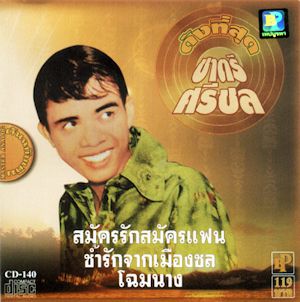
Abb.:
CD-Titel
1989-05-20

Im Kampf gegen aufständische Karen (ကရင်လူမျိုး), Kachin (ကချင်လူမျိုး) und in den Dschungel geflüchtete birmanische Studenten dringen 400 schwerbewaffnete birmanische Soldaten auf Thai-Gebiet in der Amphoe Mae Sot (แม่สอด), Provinz Tak (ตาก), vor.
Abb.: Lage von Mae Sot (แม่สอด)
[Bildquelle: OpenStreetMap. -- Creative Commons Lizenz (Namensnennung, share alike)]
1989-05-21


Der König wird in einem Bericht der New York Times über sein Verhältnis zu den Militärdiktatoren in der Anfangszeit folgendermaßen zitiert:
"‘When I’d open my mouth and suggest something, they’d say: "Your Majesty, you don’t know anything." So I shut my mouth. I know things, but I shut my mouth. They don’t want me to speak, so I don’t speak’"
1989-05-25
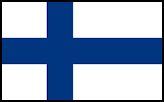
Der finnische Ingenieur Jouko Tattari meldet für die Firma Nokia Mobile Phones Ltd. das Mobiltelefon (Handy) als Patent an. Das Mobiltelefon wird in Thailand erstmals flächendeckend moderne Kommunikation ermöglichen.
Abb.: ®Nokia NMT-900, das erste automatische zellulare Mobiltelephon von 1989 (links), zum Vergleich daneben: Nokia 1100 von 2003
[Bildquelle: Львова Анастасия / Wikipedia. -- Public domain]
1989-05-26

Burma benennt sich um in Republic of the Union of Myanmar (ပြည်ထောင်စု သမ္မတ မြန်မာနိုင်ငံတော်).
1989-05-29

Die oberste Mönchsbehörde (มหาเถรสมาคม) beschließt, Phra Bodhirak (พระ โพธิรักษ์, geb. in Si Saket - ศรีสะเกษ - 1934 - ), den Gründer von Santi Asoke (สันติอโศก), zu zwingen, aus dem Orden auszutreten. Phra Bodhirak weigert sich, deshalb wird er im Juni von der Polizei verhaftet. Da die Polizei die gesetzlich vorgesehenen Ermittlungstermine verpasst, muss Bodhirak später freigelassen werden.
Abb.: Bodhirak (โพธิรักษ์)
[Bildquelle: http://www.asoke.info/pdf_book/asoke_book.html. -- Zugriff am 2011-12-12. -- Fair use]
"Phra Bhodhirak was the eldest son in large family always struggling to make ends meet. But that only made the independent and hard-working boy more determined to rise above his means. From the age of 10 he had to work odd jobs in order to support his family. And when his mother died, he replaced her as family leader and on his own shouldered the responsibility of supporting and educating all his six brothers and sisters.
The enterprising boy, however, was also noted for his artistic leanings. When in the Poh Chang College of Arts and Crafts (โรงเรียนเพาะช่าง), he changed his name Mongkol (มงคล) to Rak, meaning "love", and determined to excel in writing to make his name in the entertainment circle. Which he did.
He quickly became successful as TV programmer, song composer, and writer. Rak Rakpong became a household name for TV viewers. He had a big house, expensive cars, and enjoyed a bachelor's indulgences. But in the meantime, he remained a loving and responsible eldest brother.
Rak went through numerous "quests" before he finally turned his back on fame, success, and other worldly pleasures.
A fascination with psychic powers led him to study hypnotism and black magic. He became a spirit medium and faith healer for a number of years before shifting his interest to dhamma practice.
"When I decided to practise dhamma, I was already earning 20,000 baht. My career as song composer was at its height. I, like the Lord Buddha, did not succumb to wealth, fame and comfort.
"I'm not the type of the person who clings. I can always cut off whenever I like. Just like that."
He shocked his family and friends by shaving his head, wearing only simple white clothes, and going around barefoot. By the time he finally decided to resign from his job, he had been a strict vegetarian for a number of years.
"People thought I was mad," he recalls, adding, however, that he became "accomplished" only two years after he started practising dhamma and before his ordination.
"I was fast because I put my mind to it," he says, stressing the importance of willpower in mind purification, and that he is his own teacher - no one else.
He resigned from his job in 1970 and was ordained a few months later in the Dhammayutika Sect (ธรรมยุติกนิกาย), but not before he forewarned the abbot not to let other monks "disturb" his quietude.
"People just would not listen because I was not a monk. So I became a monk, although the saffron robe did not really matter to me."
He resigned from the Dhammayutika Sect three years later when the abbot would not let him organise a meeting for his followers which would be also attended by monks from the Mahanikaya Sect (มหานิกาย).
After that he set up a Buddhist centre in Nakhon Pathom (นครปฐม), where monks wore brownish robes and strictly followed the monks' disciplines as in ancient times.
But as his popularity increased among those who were tired of the ineffectiveness of the orthodox ecclesiastical order, Phra Bhodhirak's "holier than thou" criticisms created a strong opposition from the order itself.
The last straw came when the order threatened to demolish his centre and forced his ordainer, who was critically ill, to expel him from the sangha.
In 1975, he declared independence and formed Santi Asoke (สันติอโศก), which, he stresses, does not mean that he is no longer a Buddhist monk.
"I have never left the monkhood. I've never said I would leave the monkhood, never performed a ceremony to do so. My heart has never left."
What he did, he argues, was only to return the certificates to the clergy which cannot disqualify him as a monk because he has not broken any rules stated by Buddha.
Phra Bhodhirak then gradually built up his new religious territory where he laid all the ground rules and performed ordinations himself although he had been ordained less than the normally required 10 years.
Santi Asoke has four centres, and an "ant army" of followers which, among other things, churns out 560,000 books for free distribution annually to spread Phra Bhodhirak's teachings.
At Santi Asoke, people strictly follow Buddhist principles with a strong emphasis on simplicity, hard work, and self sacrifice. Followers and monks eat only one meal a day. And only vegetarian food. Monks and nuns wear brownish robes and do not shave their eyebrows as convention dictates.
While modest and hard-working, all seem to be determined to be different from the rotten lot. They are even selective in accepting donations and new members. One has to join their activities at least seven times in order to be able to donate.
Going back to Buddha's fundamental teachings, Santi Asoke counters the mainstream materialism and consumerism and has set up an "utopian Buddhist society" in Nakhon Pathom where members live, work, and produce food on the basis of communal harmony.
Apart from its model Buddhist villages, Santi Asoke members - predominantly professionals, middle class, to lower middle class - have also set up a model grocery store and herbal product business based on their intention to help consumers rather than make profits.
The Santi Asoke projects have drawn much attention and admiration from academics for their projection of an alternative lifestyle according to Buddhist beliefs vis-a-vis Western-style consumerism, so much so that they are willing to dismiss his antagonistic approach.
But not the clergy.
According to them, Phra Bhodhirak is illegal, ignorant, aggressive and divisive.
The outspoken monk, they say, also violates one of the basic principles of the Buddhist monkhood - never to boast of one's spiritual achievements.
In his biography, Phra Bhodhirak argues that he needs no formal training since he has accumulated knowledge and merit from his past lives.
He mentions the name Phra Sariputta, one of Lord Buddha's main disciples, several times in his biography, implying that he is the reincarnation of or, at the very least, a follower in the footsteps of Phra Sariputta.
He also attacks the clergy and other schools of Buddhist practice in Thailand, explains away his arrogance, and dismisses the charges of divisiveness brought against his behaviour.
He argues that he was not causing rift but only trying to bring the good things in both the Mahayana and Theravada traditions together once again - by going back to the fundamental teachings and practices of ancient times as he understands them.
Vegetarianism, he says, is one good thing he has borrowed from Mahayana. But he does not spare any bullets when it comes to the clergy.
"Those in high positions are simply of no use. They have not achieved spiritual salvation and they even misunderstand Buddhist teachings."
Or the forest monks who devote themselves to mind purification. "They end up being like hermits. And ones without wisdom. Simply no use to people."
His criticism of other schools of Buddhism has not won him any popularity contests, either."
[Quelle: http://www.bunniyom.com/insight2_the-man-behind-santi-asoke.html. -- Zugriff am 2011-12-12]
1989-05-30

Der oberste Militärchef, Gen Chavalit Yongchaiyudh (ชวลิต ยงใจยุทธ) ordnet an, dass gegen Personen rechtlich vorgegangen wird, die in Flugblättern dazu aufrufen, dass anstelle des Parlaments ein "Revolutionary Concil" trete. An dessen Spitze solle Prem Tinsulanond (เปรม ติณสูลานนท์) stehen. Die Flugblätter sind unterzeichnet von Rainan Aroonrangsi, ein früherer Lektor an der Thammasat University und Generalsekretär der Socialist Party. Es werden 10 Personen verhaftet, Rainan ist nicht unter ihnen.
1989-06
Im Juni sollte der Entwurf eines reformierten Abtreibungsgesetzes in die parlamentarische Debatte kommen. Wegen des starken Widerstands gegen erleichterte Abtreibung wird der Gesetzesentwurf zurückgezogen.
1989-06-01
Eröffnung des ersten thailändischen 7-Eleven-Geschäfts in Bangkok. Charoen Pokphand Group (เครือเจริญโภคภัณฑ์) ist der Franchise-Vergeber in Thailand.
Abb.: ®Logo
Abb.: 7-Eleven, Bangkok, 2010
[Bildquelle: Krista. -- http://www.flickr.com/photos/scaredykat/4431282784/. -- Zugriff am 2011-12-12. -- Creative Commons Lizenz (Namensnennung)]
"Die 7-Eleven (sprich: „seven-eleven“) ist ein internationaler Mischkonzern mit Sitz in Chiyoda, Tokyo, als Seven-Eleven Japan Co. Ltd, die sich im Besitz der Seven & I Holdings Co. (Japan) befindet. 7-Eleven betreibt, gemessen an der Anzahl der Filialen, die weltweit größte Kette von Einzelhandelsgeschäften in 16 Ländern: (Japan, USA, Thailand, Taiwan, Südkorea, Volksrepublik China einschließlich Hongkong und Macau, Malaysia, Mexiko, Kanada, Australien, Singapur, Philippinen, Norwegen, Schweden, Indonesien, Dänemark. Der Schwerpunkt der Aktivitäten mit insgesamt 47000 Filialen liegt in Ostasien (~36000 Filialen) und Nordamerika (~9000 Filialen).[1] In Deutschland ist 7-Eleven nicht aktiv. Geschichte und Aktivitäten
Das Unternehmen wurde 1927 in Oak Cliff, einem Vorort von Dallas (Texas), gegründet. Die Märkte hießen zunächst „Tote'm“, der Name 7-Eleven wird erst seit 1946 verwendet.[2] Die größte Anzahl der 7-Eleven-Geschäfte findet sich in Japan. In den 1980er Jahren war das Unternehmen in finanzielle Schwierigkeiten geraten, und das japanische Einzelhandelsunternehmen Itō-Yōkadō (イトーヨーカ堂) erlangte die Kontrolle und Mehrheit an 7-Eleven. Das Unternehmen ist ein Tochterunternehmen der Seven & I Holdings (株式会社セブン&アイ・ホールディングス).
Weltweit gibt es heute mehr als 47.000 Geschäfte.[3] Nur ein kleiner Teil davon sind Filialen des Konzerns, der Rest wird von selbstständigen Franchisenehmern betrieben.[4] Hinsichtlich des globalen Umsatzes und der globalen Mitarbeiterzahl sind keine konsolidierten Zahlen bekannt. Die größten Tochtergesellschaften befinden sich in Japan und in den USA. 7-Eleven Japan hatte im Jahr 2011 ca. 5.700 Mitarbeiter bei 2 Billionen Yen Einzelhandelsumsatz (ca. 20 Milliarden Euro).[3] 7-Eleven USA hatte im Jahr 2010 ca. 47.000 Mitarbeiter bei 16.7 Milliarden USD Einzelhandelsumsatz. Die Zahl der Mitarbeiter in den Franchise-Filialen ist nicht bekannt.
Zwar kündigte 2004 der norwegische Lizenznehmer Reitan Group an, bis 2006 einen 7-Eleven-Shop in Berlin zu eröffnen und das deutsche Netz dann zügig auf 100 Geschäfte auszubauen,[5] bislang wurde dieser Plan aber nicht umgesetzt, so dass 7-Eleven in Deutschland nicht präsent ist.
In den USA und in Kanada sowie in Australien wird an manchen 7-Eleven-Geschäften auch Kraftstoff verkauft (zum Beispiel Citgo und Shell). Das Motto in den USA lautet: Oh Thank Heaven for 7-Eleven (Dem Himmel sei Dank für 7-Eleven).
NameUrsprünglich waren die Geschäfte von 7.00 bis 23.00 Uhr geöffnet, durch die Zeitangabe 7 am bis 11 pm (7–11) entstand die Unternehmensbezeichnung. Seit einigen Jahrzehnten sind die meisten Geschäfte jeden Tag und rund um die Uhr geöffnet.
MarketingVon 1981-1991 war 7-Eleven Hauptsponsor eines Radsportteams, das auch den Namen des Unternehmens trug.
Die Kette überraschte 2007 in Nordamerika mit einer ungewöhnlichen Werbeaktion. Alle nordamerikanischen Supermärkte verkauften Simpsons-Produkte wie „Buzz-Cola“. Zwölf Märkte wurden sogar in den aus den Simpsons-Serien bekannten „Kwik-E-Mart“ umbenannt.[6]"
[Quelle: http://de.wikipedia.org/wiki/7-Eleven. -- Zugriff am 2012-01-14]
1989-06-03/04

China schlägt einen Volksaufstand am Platz des Himmlischen Friedens (天安门广场) in Beijing nieder.
Abb.: Lage des Platzes des Himmlischen Friedens (天安门广场)
[Bildquelle: OpenStreetMap. -- Creative Commons Lizenz (Namensnennung, share alike)]
1989-06-05
Laut Presseberichten gibt es nur noch zwei Personen, welche die Oboe Pi chanai (ปี่ไฉน) beherrschen. Die beiden Musiker, Siri Wansanit und Suree Sukeerak, arbeiten für den königlichen Haushalt. Das letzte Mal bekam man sie bei der Kremation des Sangharaja (พระสังฆราช) zu hören.
1989-06-20
Bangkok Post: Suthon Sukphisit (สุธน สุขพิสิฐี): Rockets roar at Mon cremation rite for a monk
Über den Einsatz von Raketen (ลูกหนู = Mäuschen) bei der Kremation von Mönchen in Mon-Tradition (มอญ). Aus der Verwendung von Raketen, um den Scheiterhaufen in Brand zu setzen, hat sich diese Tradition zu Wettbewerben entwickelt, wer ein Modell des Scheiterhaufens am besten in Brand setzt. An solchen Wettbewerben nehmen über 10 Teams teil, je mit ca. 20 Raketen. Zuschauer machen Wetten auf die Gewinner. Gelegentlich kommt es bei solchen Bestattungsfeierlichkeiten zu schweren - sogar tödlichen - Unfällen.
Raketen für diese Feste werden in Pak Kred (ปากเกร็ด), Provinz Nonthaburi (นนทบุรี), und Phra Pradaeng (พระประแดง), Samut Prakan (สมุทรปราการ), produziert.
Abb.: Lage von Pak Kred (ปากเกร็ด)
[Bildquelle: OpenStreetMap. -- Creative Commons Lizenz (Namensnennung, share alike)]
Abb.: Lage von Phra Pradaeng (พระประแดง)
[Bildquelle: OpenStreetMap. -- Creative Commons Lizenz (Namensnennung, share alike)](Wir selbst haben 1976 eine solche Kremation eines hochrangigen Mönchs in Mae Hong Son - แม่ฮ่องสอน erlebt.)
Abb.: Lage von Mae Hong Son (แม่ฮ่องสอน)
[Bildquelle: OpenStreetMap. -- Creative Commons Lizenz (Namensnennung, share alike)]
1989-06-24 - 2002-11-15

Jiang Zemin (江泽民, 1926 - ) ist Generalsekretär der Kommunistischen Partei Chinas (中国共产党中央委员会总书记).
Abb.: Jiang Zemin (江泽民) mit Gattin und US-Präsident George W. Bush mit Gattin, 2002
[Bildquelle: Weißes Haus / Wikimedia. -- Public domain]
1989-06-27

Bangkok: Proteste vor Einrichtungen Singapurs, weil ein Singapurer Gericht beschlossen hat, dass Somkid Kamjan (สมคิด คำจันทร์), der illegal in Singapur arbeitete, mit Prügeln bestraft werden soll. Am 1989-07-21 begnadigt der Präsident Singapurs Somkid. Am 1989-07-17 gibt Singapur illegalen Arbeitern die Gelegenheit bis zum 8. August das land straflos zu verlassen. 77 illegale Thai-Arbeiter machen davon Gebrauch.
1989-06-27
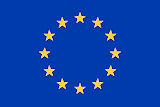
Die Europäische Gemeinschaft (EG) beschließen die Einleitung einer Wirtschafts- Und Währungsunion.
ausführlich: http://www.payer.de/thailandchronik/ressourcen.htm
Zu Chronik 1989 / B. E. 2532. -- 3. Juli bis Dezember